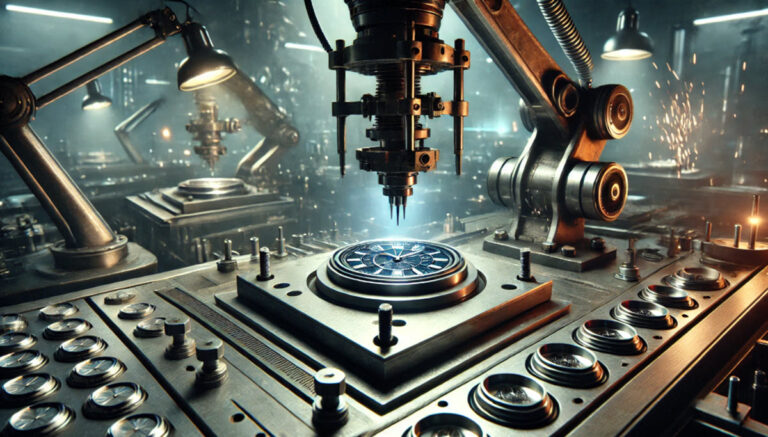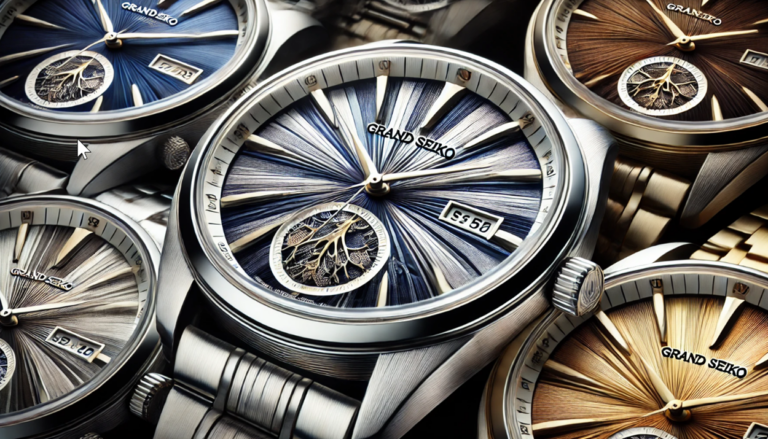Table of Contents
Gravity might seem like an unassuming force at first, but it acts as an unseen sculptor that carves the world around us: dictating how objects fall, and even impacting the flow of time. One of the most surprising impacts of gravity is seen in mechanical watches and their accuracy. Obsessively, horologists have attempted to mitigate the varying issues gravitation poses to timepieces, and in the process created some of the most impressive innovations in watchmaking history.
In this blog, we are going to explore the ongoing dance between gravity and mechanical timepieces. We shall study the impact of gravity on watches, the ingenious ways manufacturers have employed to combat these forces, and their impact on the current world of precision timekeeping.
The Impact of Gravity on Mechanical Timepieces
Mechanical watches and timepieces are best described as intricate systems of engineering due to the sheer number of tiny components that are constantly in motion. Hundreds of tiny components need to be synced in order for the watch to function properly. This commenting of parts gives birth to amazing accuracy, whilst maintaining delicate balance. But all of this changes when you introduce gravity into the mix.
Positional Variations
The impact of gravity can be seen most prominently through positional variation. The position from which the watch is worn and stored, shall it be face up or down, and crowned up or down, all impact the forces applied on the balance wheel and escapement.
This variance can result in the watch gaining or losing seconds depending on how it is positioned. For example, a watch lying flat on a nightstand may perform differently than one worn vertically on the wrist.
The Changes In Amplitude
In essence, amplitude can be defined as the arc or swing made by the balance wheel which is the heart of any mechanical watch. The force of gravity has some role in this motion. A watch’s amplitude change due to the position of the watch will impact timekeeping.
Friction And Wear
The force of gravity also has an effect on the distribution of lubricants throughout the movement. This gradually impacts the friction between moving parts such as the gears and the pivots that provides rotation, causing some loss in precision and weakening the elements.
Despite these changes usually being very small — often measured in fractions of a second per day — the impact of achieving perfection is what transforms true artistry in horology.
Watchmaking’s Brilliant Response To Gravity: The Tourbillon
The tourbillon is famed, and widely admired when it comes to managing the impacts of gravity.
What Is A Tourbillon?
French for “whirlwind”, the “tourbillon” orbits around an escapement and balance wheel. Tourbillons were invented in 1801 by the remarkable Abraham-Lousi Breguet. The rotation cage performs a full revolution every 60 seconds.
Conceptually very simple but ingenious, a tourbillion helps greatly in balancing positional errors inflicted by gravity the changes in position of an escapement.
The Tourbillon’s Impact on Accuracy
Breguet’s invention once had the most profound impact on pocket watches. Since pocket watches had a tendency to be kept in a fixed position, the inaccuracies due to “positional errors” were highly pronounced.
Wrist watches, relatively less accurate than tourbillion powered ones, do involve more movement throughout the day. Regardless, they do not have the same impact tourbillons do on wrist watches. However, tourbillons continue to remain a remarkable representation of horological expertise and creativity.
The Emergence of Multi-Axis Tourbillons
New age technology has led to increases in the complexity of the tourbillon. With the introduction of multi-axis tourbillons came an additional rotating axis, such as the gyrotourbillon by Jaeger Le Coultre.
Working Principles of Gyro tourbillon
Unlike traditional tourbillons, the gyro tourbillon rotates along multiple axis. By having the escapement and the balance wheel relocate in constantly changing and unpredictable positions, the effect of gravity from any singular point of position is greatly reduced.
These amazing timepieces highlight the skill of the builders and the artistry of watchmaking. They are less worried today about enhancing practical accuracy.
Modern Strategies to Overcome Gravity’s Effects:
Contemporary horologists found smarter ways to reduce gravity’s effects while still maintaining the classic cages without tourbillons. A tourbillon is a breathtaking work of art.
Silicon Components:
The use of silicon on crucial components like the balance spring and escapement has been an incredible shift. Silicon possess light weight, is temperature tolerant, and is unaffected by magnets or friction, lessening its susceptibility to gravitational inconsistencies.
High-Frequency Movements:
More advanced figures, including Zenith’s El Primero movement beating at 36,000 vph, oscillate at higher frequencies. Higher rotational rates mean enhanced resistance against forces of gravity.
Rigorous Testing and Regulation:
Position and temperature triggers are utilized with modern chronometric certification COSC (Contrôle Officiel Suisse des Chronomètres) and METAS (Master Chronometer).
Watches and Clocks in Space: Zero Gravity Areas
Space is arguably the one location where the force of gravity has no effect on watches. How fascinating is that!
NASA famously chose the Omega Speedmaster – the first watch worn in space – for their astronauts not only due to its ruggedness, but also said its mechanics functioned perfectly in the zero-gravity environment of space.
Plane and spacecraft travel, especially into orbit, involve a lot of strenuous movement, so the timekeeping device does not only survive in outer space, it actually flourishes.
Is the Tourbillon Practical Today?
Without a doubt, the tourbillon is one of the most complex pieces of watch engineering; however, it can be – and is – argued that its practicality today lies more within jaw-dropping aesthetics rather than accuracy in timekeeping. On modern, frequently moving wristwatches, the practical use of a tourbillon features is marginal at best, given the added complexity and expense incurred.
That said, for those collectors and enthusiasts who live and breathe horology, a piece featuring at least one tourbillon is stunning.
The Effect of Gravity with Evolution Watches
We at Evolution Watches have no choice but to confront the challenge gravity poses. With every timepiece we design, produce, and assemble, we make sure to incorporate precision, balance, and flawless design while upholding the principles of traditional horology blended with advanced technologies.
Respecting the laws of physics is not treating them as an obstacle — rather, as a source of innovation and great power that pushes the boundaries of creativity and technology.
Conclusion: Gravity– the Unseen Challenge of Watchmaking
Every component of a watch, including the balance wheel and the escapement, is affected by gravity. For hundreds of years, master watchmakers have attempted to defeat this problem.
With each new horological feat, gravity seems to be losing the battle. From the spectacular spinning of a tourbillion, to the accuracy of silicon parts, or to the dependability of high-frequency movements in timepieces, it becomes harder to deny the brilliance of horology.
As enthusiasts, contemplating the impact of gravity adds another layer of fascination with the mechanical wonder pieces we adorn on our wrists. It is far more than a measuring tool, intricately engineered timepieces represent humanity’s continuous battle to dominate the forces of nature.
What About You:
Is the tourbillon more of a functional concept in your view, or does it rival a beautiful blend of art? We would love to hear your opinion because, at Evolution Watches, every story is as valuable as every second.




